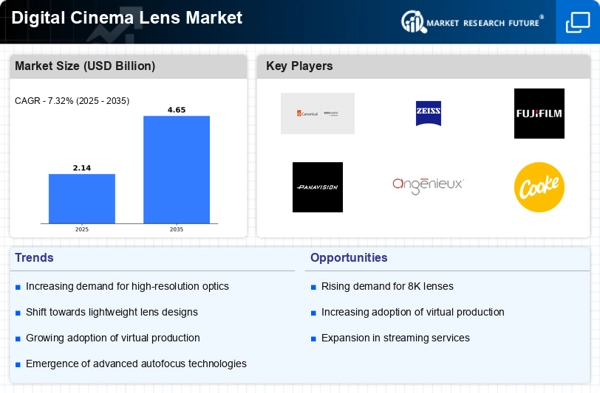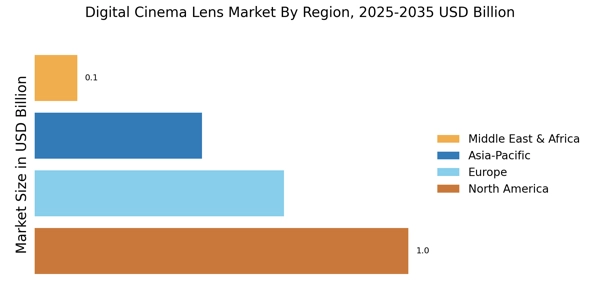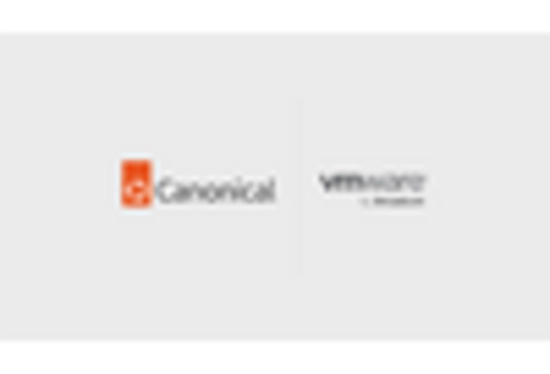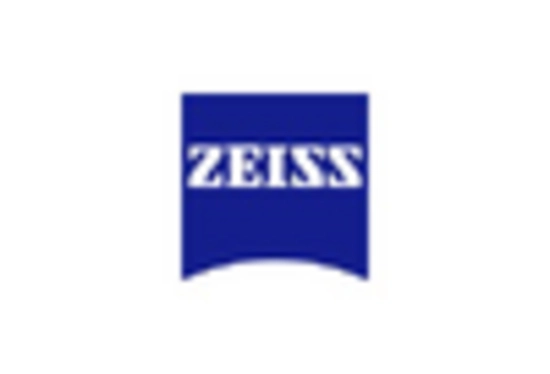Expansion of Content Creation Platforms
The Digital Cinema Lens Market is significantly influenced by the expansion of content creation platforms, including streaming services and social media. As these platforms proliferate, there is an increasing need for high-quality video content, which in turn drives demand for advanced digital cinema lenses. Reports indicate that the number of streaming subscribers has surpassed 1 billion globally, leading to a heightened focus on producing visually compelling content. This trend encourages filmmakers and content creators to invest in superior lens technology, thereby propelling the growth of the Digital Cinema Lens Market. The emphasis on high production values across various media formats suggests that this driver will continue to shape the market landscape.
Technological Innovations in Lens Design
The Digital Cinema Lens Market is significantly impacted by ongoing technological innovations in lens design. Manufacturers are increasingly focusing on developing lenses that offer improved optical performance, durability, and versatility. Innovations such as advanced coatings, lightweight materials, and enhanced autofocus capabilities are becoming standard features in new lens models. This trend is evidenced by the introduction of several new lens lines that cater to the evolving needs of filmmakers. As the industry continues to embrace these advancements, the Digital Cinema Lens Market is expected to witness sustained growth, driven by the demand for cutting-edge lens technology that enhances the filmmaking experience.
Emergence of 4K and 8K Resolution Standards
The Digital Cinema Lens Market is poised for growth due to the emergence of 4K and 8K resolution standards. As filmmakers and content creators increasingly adopt these high-resolution formats, the demand for specialized lenses that can effectively capture such detail becomes paramount. The market for 4K cameras has reportedly grown by over 30% in recent years, indicating a strong preference for high-definition content. This trend necessitates the development of lenses that can meet the optical demands of higher resolutions, thereby driving innovation within the Digital Cinema Lens Market. The potential for enhanced visual storytelling through superior lens technology suggests a favorable outlook for market participants.
Rising Popularity of Independent Filmmaking
The Digital Cinema Lens Market is benefiting from the rising popularity of independent filmmaking. With advancements in technology, independent filmmakers now have access to high-quality equipment at more affordable prices. This democratization of filmmaking has led to an increase in the number of independent films being produced, which often require specialized digital cinema lenses to achieve professional-grade results. The number of independent films produced annually has reportedly increased by over 20%, reflecting a growing trend in the industry. As these filmmakers seek to elevate their production quality, the demand for innovative lens solutions within the Digital Cinema Lens Market is likely to expand.
Increasing Adoption of Digital Cinematography
The Digital Cinema Lens Market is experiencing a notable surge in the adoption of digital cinematography techniques. Filmmakers are increasingly favoring digital formats over traditional film, driven by the advantages of flexibility, cost-effectiveness, and enhanced post-production capabilities. This shift is reflected in the growing number of digital cameras being sold, which has reportedly reached over 1 million units annually. As more production houses transition to digital, the demand for high-quality digital cinema lenses is expected to rise correspondingly, creating a robust market environment. The ability of digital lenses to deliver superior image quality and performance further fuels this trend, suggesting a promising trajectory for the Digital Cinema Lens Market in the coming years.


















Leave a Comment